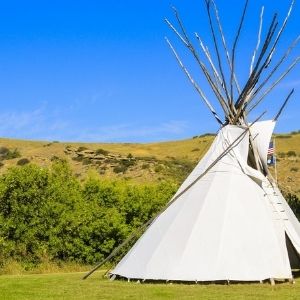Maria’s River State Park
Marias River State Park

To get to there from I-15, take exit 358 and head east on Marias Valley Road North for 3.5 miles. Then turn west on Hjartarson Road and travel for 10.2 miles, then turn south for 2.5 miles.
This 5,845-acre property, a combination of state park, and wildlife management area was established May 1, 2009. The site includes an undeveloped 14-mile stretch of the Marias River, as well as sagebrush, grassland, and short grass prairie habitats in the uplands.
Non-motorized access only. Respect private property, do not trespass. Rules prevent discharge of weapons except for lawful hunting during established hunting seasons. Pack it in and pack it out. No facilities are offered at this time.

The Marias River flows through the Wildlife Management Area for 13 miles.
When FWP bought the land, officials believed an existing road on the east side of the WMA would provide access to the river and interior of the state park. However, an adjacent landowner disputed FWP plans and stated that the road was not public.
The landowner and FWP went through a formal mediation process, and FWP proposed transferring approximately 483 acres of the WMA to the landowner in exchange for public recreational access on Lincoln Road. In November 2015, the Fish and Wildlife Commission voted down the road proposal, leaving the State Park and Wildlife Management Area without vehicle access to the river.
Montana Fish, Wildlife and Parks purchased the 5,485-acre Wildlife Management Area in 2008. A 1,878-acre state park sits next to it.
The land was previously owned by Charlie Lincoln and known as the Lincoln Ranch. When Lincoln died, he left his ranch to the Catholic Diocese of Montana with instructions to give FWP the first right of refusal if the diocese decided to sell the land.
FWP paid $2 million for the state park portion of the land, funded through a one-time appropriation from the 2007 Legislature, and $5.6 million for the WMA portion thanks to Habitat Montana funding.
The Marias River is void of any technical whitewater. It's an easy float, even for someone with minimal experience.
It provides an easy two-date float.

Curious what other visitors have had to say about the park?

Park
Open
Apr 1 to Jan 15Location
From I-15, Exit 358 east to Marias Valley Road, North 3.5 miles, turn west on Hjartarson Road, for 10.2 miles, then south 2.5 miles.
Maria’s River State Park Read More »











































































